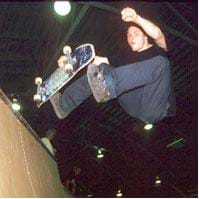
Summary
In the first of two lessons of this curricular unit, students are introduced to the concept of friction as a force that impedes motion when two surfaces are in contact. Student teams use spring scales to drag objects, such as a ceramic coffee cup, along a table top or the floor, measuring the frictional force that exists between the moving object and the surface it slides on. By modifying the bottom surface of the object, students find out what kinds of surfaces generate more or less friction. They also discover that both static and kinetic friction are involved when an object initially at rest is caused to slide across a surface. In the second lesson of the unit, students design and conduct experiments to determine the effects of weight and surface area on friction. They discover that weight affects normal friction (the friction that results from surface roughness), but for very smooth surfaces, the friction due to molecular attraction is affected by contact area.Engineering Connection
Friction is involved in many aspects of skateboarding. For example, while the wheel bearings should produce little friction, enough friction is needed between the wheels and the floor to keep the board from skidding during tight turns.Engineers must understand how friction affects a wide range of situations as they design consumer products, such as ski bottoms in which friction is a disadvantage and hiking boots where friction provides traction.
Educational Standards
Each TeachEngineering lesson or activity is correlated to one or more K-12 science,
technology, engineering or math (STEM) educational standards.
All 100,000+ K-12 STEM standards covered in TeachEngineering are collected, maintained and packaged by the Achievement Standards Network (ASN),
a project of D2L (www.achievementstandards.org).
In the ASN, standards are hierarchically structured: first by source; e.g., by state; within source by type; e.g., science or mathematics;
within type by subtype, then by grade, etc.
Each TeachEngineering lesson or activity is correlated to one or more K-12 science, technology, engineering or math (STEM) educational standards.
All 100,000+ K-12 STEM standards covered in TeachEngineering are collected, maintained and packaged by the Achievement Standards Network (ASN), a project of D2L (www.achievementstandards.org).
In the ASN, standards are hierarchically structured: first by source; e.g., by state; within source by type; e.g., science or mathematics; within type by subtype, then by grade, etc.
See individual lessons and activities for standards alignment.
Subscribe
Get the inside scoop on all things TeachEngineering such as new site features, curriculum updates, video releases, and more by signing up for our newsletter!Unit Schedule
- Day 1-2: Discovering Friction lesson
- Day 3: Sliding and Stuttering activity
- Day 4-6: Factors Affecting Friction lesson
- Day 7: Does Contact Area Matter? activity
- Day 8: Does Weight Matter? activity
More Curriculum Like This

With a simple demonstration activity, students are introduced to the concept of friction as a force that impedes motion when two surfaces are in contact. Then, in the associated activity, Sliding and Stuttering, they work in teams to use a spring scale to drag an object such as a ceramic coffee cup ...

Based on what students have already learned about friction, they formulate hypotheses concerning the effects of weight and contact area on the amount of friction between two surfaces.

Students use a spring scale to drag an object such as a ceramic coffee cup along a table top or the floor. The spring scale allows them to measure the frictional force that exists between the moving cup and the surface it slides on.

Using the same method for measuring friction that was used in the previous lesson (Discovering Friction), students design and conduct experiments to determine if the amount of area over which an object contacts a surface it is moving across affects the amount of friction encountered.
Assessment
Unit Summary Assessment: As a writing assignment or quiz, ask students to:
- define friction
- distinguish between static friction and kinetic friction
- explain why friction occurs
- describe common occurrences of friction, including those in which friction can be used to advantage in everyday life
- describe ways in which friction can be reduced
- describe how weight affects normal friction
- describe how surface area affects friction due to molecular attraction
Copyright
© 2013 by Regents of the University of Colorado; original © 2004 Duke UniversityContributors
Mary R. Hebrank, project writer and consultant, Pratt School of Engineering, Duke UniversitySupporting Program
Engineering K-PhD Program, Pratt School of Engineering, Duke UniversityAcknowledgements
This content was developed by the MUSIC (Math Understanding through Science Integrated with Curriculum) Program in the Pratt School of Engineering at Duke University under National Science Foundation GK-12 grant no. DGE 0338262. However, these contents do not necessarily represent the policies of the NSF, and you should not assume endorsement by the federal government.
The lessons and associated activities of this curricular unit were originally published, in modified form, by Duke University's Center for Inquiry Based Learning (CIBL). Visit http://www.ciblearning.org/ for information about CIBL and other resources for K-12 science and math teachers.
Last modified: August 23, 2017







User Comments & Tips